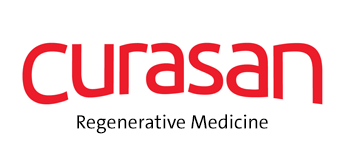 Historically, people have believed that gum disease and tooth loss were a natural part of the aging process. Though those in the medical, dental, and scientific communities now know this isn’t so—that it is possible to maintain oral health through advanced age—education amongst the general public remains lacking. As dental health providers, it’s not only important to address any comorbidities, but also educate patients about how their oral health relates to their general health and to an appropriate approach when addressing smile restorations. In this Blog, we’ll explore three of the most common comorbidities and go over methods to improve patient compliance with treatment recommendations.
Historically, people have believed that gum disease and tooth loss were a natural part of the aging process. Though those in the medical, dental, and scientific communities now know this isn’t so—that it is possible to maintain oral health through advanced age—education amongst the general public remains lacking. As dental health providers, it’s not only important to address any comorbidities, but also educate patients about how their oral health relates to their general health and to an appropriate approach when addressing smile restorations. In this Blog, we’ll explore three of the most common comorbidities and go over methods to improve patient compliance with treatment recommendations.
Cardiovascular disease (CVD) can take many shapes, such as heart attacks and strokes. The leading cause of CVD is atherosclerosis, or a hardening and narrowing of the arteries due to plaque buildups. If left unchecked, entire pathways may become blocked or plaques may rupture, resulting in clots; strokes while occurring in the brain and heart attacks when occurring in the heart.
Bacteria and Cytokines
Research shows that CVD and periodontal disease are linked in several ways, though causation is yet to be established. It’s clear that bacteria and inflammatory cytokines from the mouth are making are way throughout the body. Oral bacteria has been discovered in artery-clogging plaque and inflammation-causing cytokines found in the bloodstream. Scientists believe periodontal pockets caused by irritation gives them the opportunity to infiltrate the rest of the body. It’s also worth noting that cytokine production increases in response to the presence of bacteria following oral procedures, including scaling.
Lipid Imbalance (High Cholesterol)
Although the mechanisms are unclear, patients with periodontal disease have also been shown to have unbalanced lipids in the bloodstream. Their low-density lipoprotein (LDL) count is high and high-density lipoprotein (HDL) count is low, which most people would know simply as having high cholesterol. Studies show this corrects itself to some degree following periodontal treatment.
Endothelial Dysfunction
Studies have further linked endothelial dysfunction to periodontal disease. Cells of the endothelium, which is a thin membrane that lines blood vessels and the heart, normally release enzymes that control everything from blood clotting through immune function and platelet adhesion as well as substances that are responsible for vascular contraction and relaxation. When these cells stop functioning properly, arteries cannot fully dilate, so dysfunction can predict if a stroke or heart attack is imminent. Like lipid imbalances, endothelial dysfunction coincides with periodontal disease and treatment of periodontal disease improves endothelial function.
2) DiabetesCurrent research indicates that type 2 diabetes predisposes patients for periodontal disease and periodontal disease can worsen diabetes. Scientists believe this is because diabetes actually causes a change in the microorganisms present in the mouth. The main factor in this, says Dr. Palle Holmstrup, Professor of Periodontology at the University of Copenhagen, “is probably the formation of advanced glycation end products (AGE) by glycation of proteins and lipids. At high blood-sugar levels, characteristic of poorly controlled DM, the formation of AGE is increased, and the receptors for AGE (RAGE) are also upregulated, which leads to increased production of proinflammatory cytokines and increased tissue degradation, including increased bone resorption and decreased bone formation.”
Due to the growing number of individuals with diabetes, and the great number who go undiagnosed, it may be beneficial to refer patients to their primary care physician for a diabetes screening when they display signs of periodontal disease. Treatment of diabetes and dental care will need to be managed at the same time, as periodontal disease is linked with insulin resistance and patients who have controlled diabetes do not have the same risk level for periodontal disease as those who go untreated.
3) HypertensionGenerally speaking, hypertension is a precursor to or risk factor of cardiovascular disease, though some consider it a form of cardiovascular disease in and of itself. It’s also correlated with periodontal disease, though research indicates the condition and periodontal disease essentially feed off each other. For example, patients with greater attachment loss, which is linked with periodontal disease, are more likely to have hypertension. The link is so strong that many advocate for referrals to a general practitioner when attachment loss is noted. This may enable the patient, who typically sees a dentist more often than their primary care physician, to get in for a diagnosis and treatment of hypertension prior to developing cardiovascular disease. Equally, patients with existing hypertension are often treated with calcium antagonists. These are known for causing gingival hyperplasia (overgrown gums) at times, which can exacerbate periodontal disease. Patients with hypertension are also more likely to experience heavy bleeding during oral surgery, so coordination between primary care and the dental office is paramount in helping a patient treat hypertension and maintain a healthy smile.
Additional Diseases and Conditions
It’s worth noting that cardiovascular disease, diabetes, and hypertension are only the tip of the iceberg. There are further links with:
- Rheumatoid Arthritis
- Osteoporosis
- Alzheimer’s Disease
- Parkinson’s Disease
- Psoriasis
- Lung Conditions
Many even consider mental health conditions and drug use as comorbidities. Naturally, mental health issues can lead to improper hygiene or even things like purging and thusly periodontal disease and decay. Drug use, which commonly coincides with mental health issues, brings about a whole host of changes to the mouth, from changes in diet to poor hygiene and irritation. Moreover, treatments for these conditions can include medications associated with xerostomia or produce further oral changes, which can put patients at greater risk for periodontal disease.
How to Approach Patients with ComorbiditiesEducate your team. Each person in your office should be familiar with comorbidities and how they impact oral health. This includes everyone from the front office, who may be handling intake and collecting health histories, through your back office staff, who will likely be treated as a confidant by patients as they ask follow-up questions and occasionally divulge information not found on the health history to. Make sure everyone knows the importance of documenting changes and communicating health information to the hygienists and doctor.
Explain in layman’s terms. Break down the relevant concepts in bits that are easy to digest and give your patient your undivided attention while you explain what’s happening. This will help underscore the importance of the diagnosis and increase the patient’s confidence in your ability to help him or her treat the conditions.
Let them take baby steps. Many people are unprepared for a diagnosis and may have barriers to treatment, such as funding and time away from work. While they should understand the urgency of getting treatment, they should also be aware there are many avenues to restore their oral health and that you’re there to support them as best you can. Whenever possible, ask probing questions to identify if there will be barriers to treatment so that the dental team can help clear them.
Express the importance of focusing on health and function first. People are visual creatures, so they may well come into your office seeking improved aesthetics. For example, patients often want to replace missing teeth to improve appearance, yet they don’t fully understand why they lost the tooth in the first place. You can also use visual aids, such as an intraoral camera, to demonstrate what inflammation and pocketing look like. Many offices keep “brag books” of their best cosmetic work. Consider keeping a before and after book of patients receiving treatment for periodontal disease too. This way, they can see how much health impacts appearance and will be more prone to actively pursuing their health as a means to improve aesthetics.
Stock up on literature. Purchase premade brochures or create your own handouts that patients can take home. Getting a diagnosis of periodontal disease can seem overwhelming and patients will not retain everything you tell them in the office. Make sure they have a reference of key points to review on their own later.
Keep in contact with primary care. Recommendations for most conditions involve working alongside the primary care physician. Drop the PCP a note that additional testing may be warranted and request that they keep you in the loop with the diagnosis and treatment. When the patient is hearing the same message from both offices, treatment compliance increases.
Follow up regularly. If you’re using an automated recare system such as emails or postcards to remind patients they’re due for treatment, ensure it’s kept up to date with the patient’s current cycle. Because scaling needs aren’t readily tracked by these kinds of systems, keep a running list of patients who are due for scaling and have a member of the team follow up with them regularly until they’re on the books.
Help Patients Rebuild with curasan
Periodontal disease is destructive and is left untreated all too often, resulting in excessive damage to the teeth, gums, and underlying bone. If bone and tissue regeneration is part of your restoration plan for patients, learn more about the dental innovations curasan has to offer.
References:
